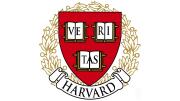As a nonprofit organization, Harvard is required to submit Form 990 to the Internal Revenue Service each year. The fiscal year 2018 documents for the University and for the Harvard Management Company (HMC), which invests the endowment, were released publicly today, and include the earnings of the top-paid employees of both organizations.
Former president Drew Gilpin Faust, who stepped down last July, made $1,707,070 in total compensation in 2017 (up from $1,533,485 in 2016.) That figure includes $961,952 in base compensation, $534,140 in retirement and other deferred compensation, $191,960 in nontaxable benefits (principally use of the presidential residence in Cambridge, plus health and other employee benefits), and $19,018 in other reportable compensation.
Members of the Harvard Corporation vote each year on how much deferred compensation Faust will receive “to recognize exceptional service and encourage retention.” In 2017, the Corporation voted to credit her with $500,000, up from $400,000 in 2016 and $300,000 the previous year. This money is kept in a “deferred compensation account” that vests in three-year cycles—so the deferred compensation from 2015, 2016, and 2017 all vested in 2018.
University provost Alan M. Garber earned $880,900 in total compensation in 2017, up from $871,960 the previous year, and Michael D. Smith, the former dean of the Faculty of Arts and Sciences, who stepped down last August, earned $730,382, up from $701,956 the previous year.
Other reported University administrators making more than $500,000 in total salary and benefits in 2017 include vice president and chief financial officer Thomas J. Hollister; senior vice president and general counsel Robert W. Iuliano; executive vice president Katie Lapp; former vice president for alumni affairs and development Tamara Elliott Rogers; former dean of Harvard Medical School Jeffrey Flier; current medical school dean George Daley; and dean of Harvard Business School Nitin Nohria. The University’s three highest-paid faculty members all taught at Harvard Business School and earned more than $1 million, which included for each of them a teaching salary, early retirement package, and insurance benefits.
Top salaries at HMC, a wholly owned subsidiary of Harvard, are always much higher than those of University employees. The organization manages the investment of Harvard’s endowment, the income from which makes up more than one-third of the University’s annual budget. In fiscal year 2018, $1.85 billion of this income was used to pay for Harvard’s academic programs, financial aid, and other needs, according to an HMC press release.
The 2017 earnings for HMC employees cover the second half of fiscal year 2017, when endowment returns were 8.1 percent, and the first half of fiscal year 2018, when returns were 10 percent—both significant improvements over fiscal 2016, when returns were negative 2 percent. Calendar year pay for 2017 is only based on performance through the end of fiscal year 2017 (through June 30, 2017), and does not account for endowment performance in fiscal 2018.
HMC president and CEO N.P. Narvekar made $9,251,786 in total compensation, $6.5 million of which was his regular performance pay for that year, and the rest of which was reimbursement for pay he forfeited after leaving his former position as the head of Columbia’s endowment.
Pay for other reported HMC employees was as follows:
- Daniel Cummings, managing director, real estate: $10,057,908 ($23.9 million the previous year)
- Michele Toscani, managing director, fixed income: $5,462,879 ($7.1 million the previous year)
- Bob Ettl, chief operating officer, $5,254,276 ($4.4 million the previous year)
- Adam Goldstein, managing director, generalist team: $5,238,443 (new hire)
- Carlos Saravia, managing director, generalist team: $5,219,912 (new hire)
HMC’s 990 form for fiscal year 2018 includes both employees who were compensated under the organization’s old pay structure and those who were compensated under the current one. HMC’s pay formula used to provide a base salary, with the large majority of bonus compensation depending on investment managers’ performance. The bonuses were awarded by measuring managers’ performance against overall market returns for their asset class; a portion of the bonus itself was held back in the endowment and subject to being “clawed back” if they underperformed in subsequent years (a system intended to encourage long-term thinking). In one of the steps taken since he joined HMC in December 2016, Narvekar changed this system: beginning in fiscal year 2018, bonuses are awarded according to the endowment’s overall performance, not according to asset class. Most of the organization is now working under this new framework.









